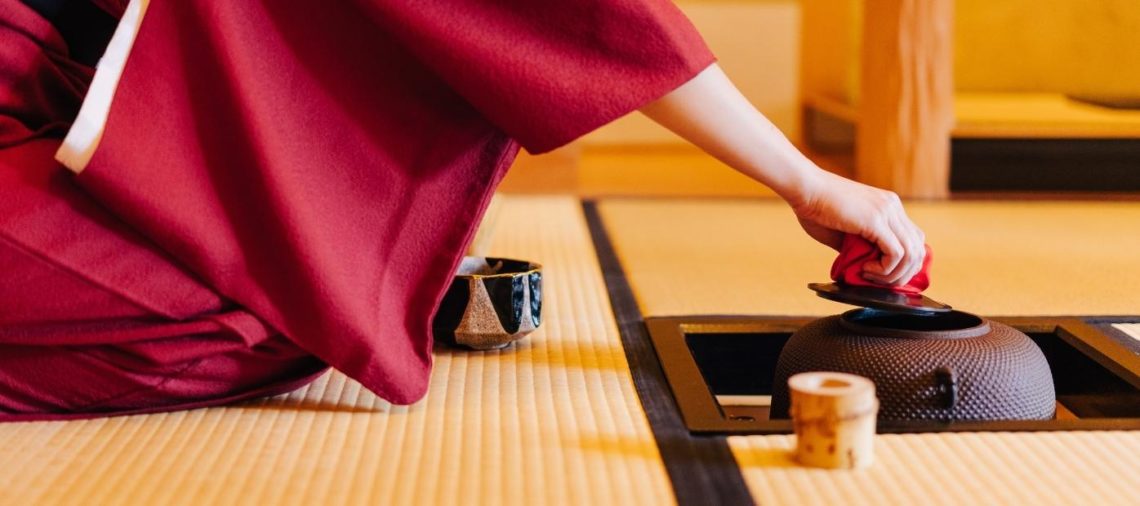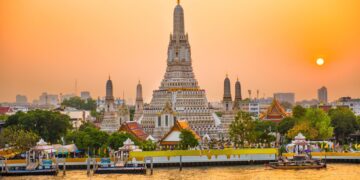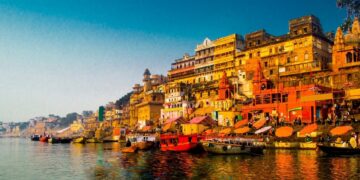Zen Buddhist monks brought tea to Japan in the 9th century, and the Japanese did their best to elevate this plant to the elixir of life by cultivating it and consuming its liquor with sanctity. Tea is a way of life for the Japanese, separate from their proverbial workaholism, the madness of the big cities, and the sometimes too large number of robots in any of their factories. Green tea (matcha) is at the heart of the healthy Japanese diet. Ask any Japanese about matcha, and they will talk about it in terms of awe.
I’ve met Japanese over 70 who looked 50 and “blamed” their flawless physique on drinking green tea. In addition, green tea is used heavily in various dishes, including baking. Those who are not fans of tea will probably not appreciate its qualities. But surely, after taking part in a tea ceremony, or at least a ritual with elements of the tea ceremony, they will be impressed by the significance of this plant in the culture of a fascinating people.
Tea house in the Hama Rikyu garden
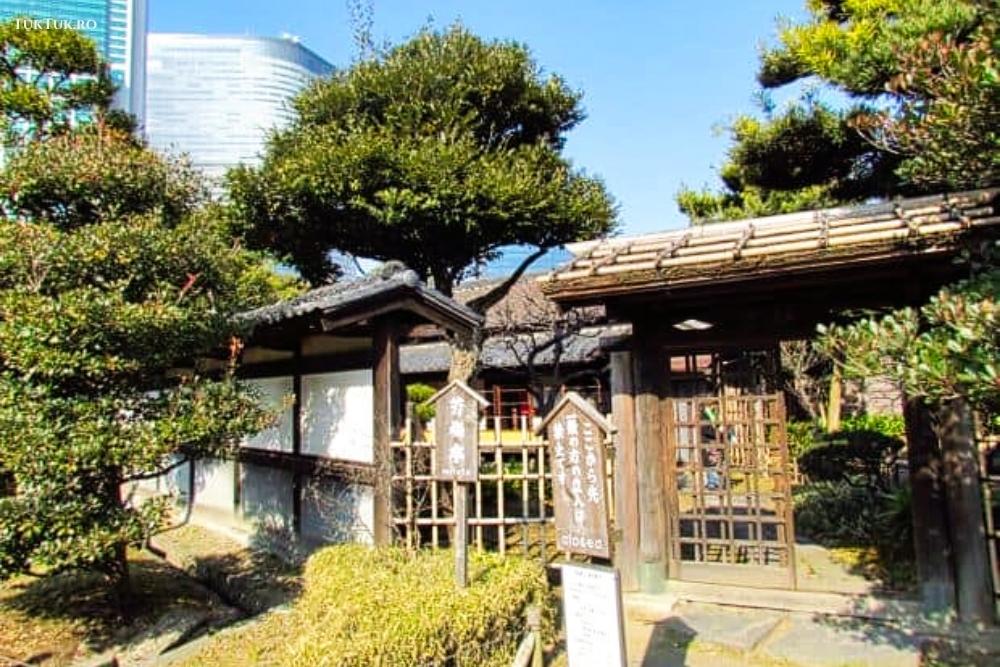
I had the opportunity to participate in such a ritual in a tea house, in the middle of the Hama Rikyu Garden, an oasis of calm surrounded by the skyscrapers of the world’s most expensive district, Ginza, in Tokyo. A tea ceremony is a special event, and it goes far beyond the idea of “let’s have tea!”.
When the host invites someone to a tea ceremony (a few days in advance), they have to make sure that absolutely every detail is taken care of meticulously. The ceremony takes place in a room called chashitsu, specially set up for the event. The tea room is located in the garden and is somewhat separate from the house. When guests arrive, they are taken to a waiting room by the host’s assistant. The guests are offered sayu (the hot water used to make tea), and the main guest is determined. Afterward, guests are led into a flowerless garden with flowing water – an area called roji, where guests are directed to get rid of the outside dust. They will sit on a bench and wait for the host (teishu).
The Japanese tea ceremony involves meticulously crafted elements
Before welcoming guests, the host fills a stone basin with fresh water and purifies her hands and mouth. She then turns to her guests, whom she greets with a bow. No words are spoken. They all pass through the chumon, a gate signifying the boundary between the physical and spiritual worlds, symbolized by tea. The guests are led to the stone basin, where they purify themselves, then to the tea house, where they enter through a sliding door. Before entering, everyone bows, signifying equality in rank or social position. The last person to enter closes the door behind them.
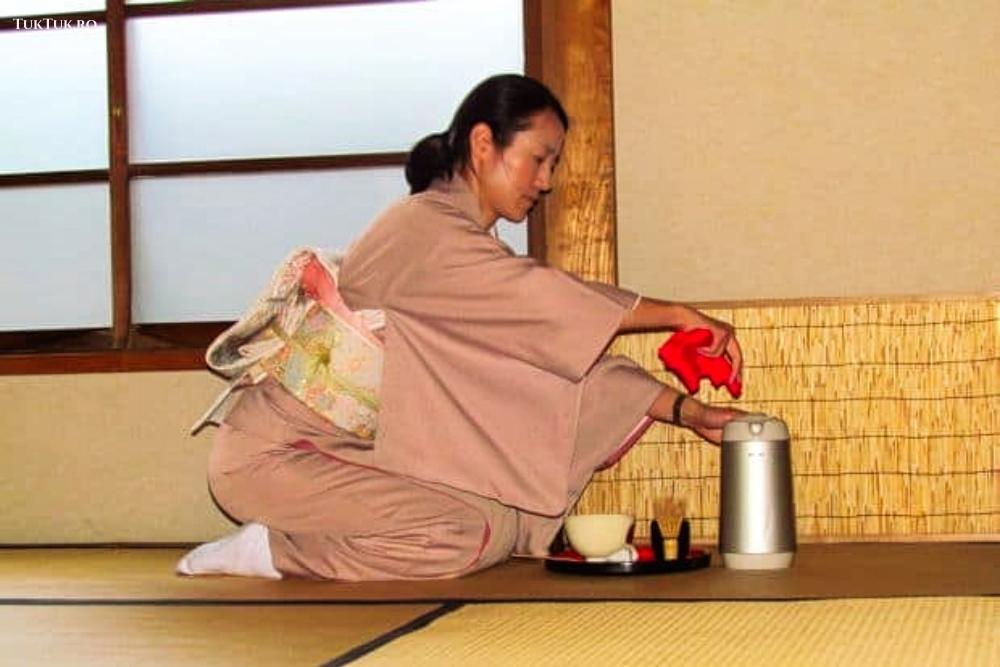
There are no special decorations in the tea house, except for an alcove called tokomona. There is a painted hanging cloth (kakemono). The canvas is carefully chosen by the host and suggests the ceremony’s theme. The guests admire this canvas and its pictographs, then take their seats. As soon as the host is seated, compliments begin between the host and the main guest, then to everyone else.
In the tea ceremony, water represents yin, and the hearth fire represents yang. A stone jar (mizusashi), filled with freshwater, symbolizes purity and can only be touched by the host. Green tea (matcha) is kept in a small ceramic container in front of the mizusashi. If the tea is served during the day, a gong will be heard to strike. If, however, it is served in the evening, a bell will ring five to seven times to gather guests into the tea house.
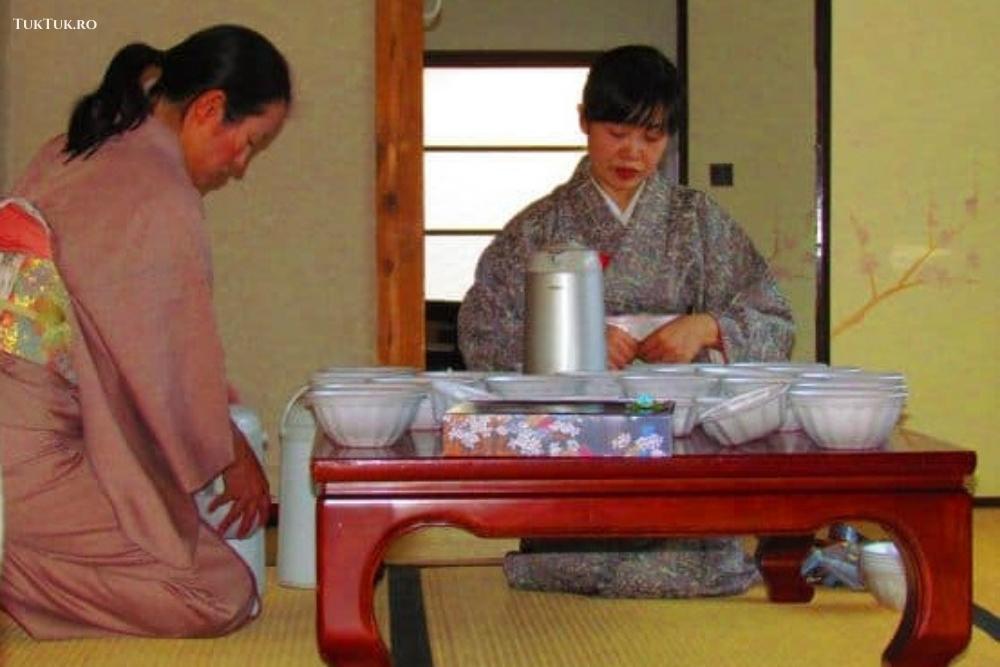
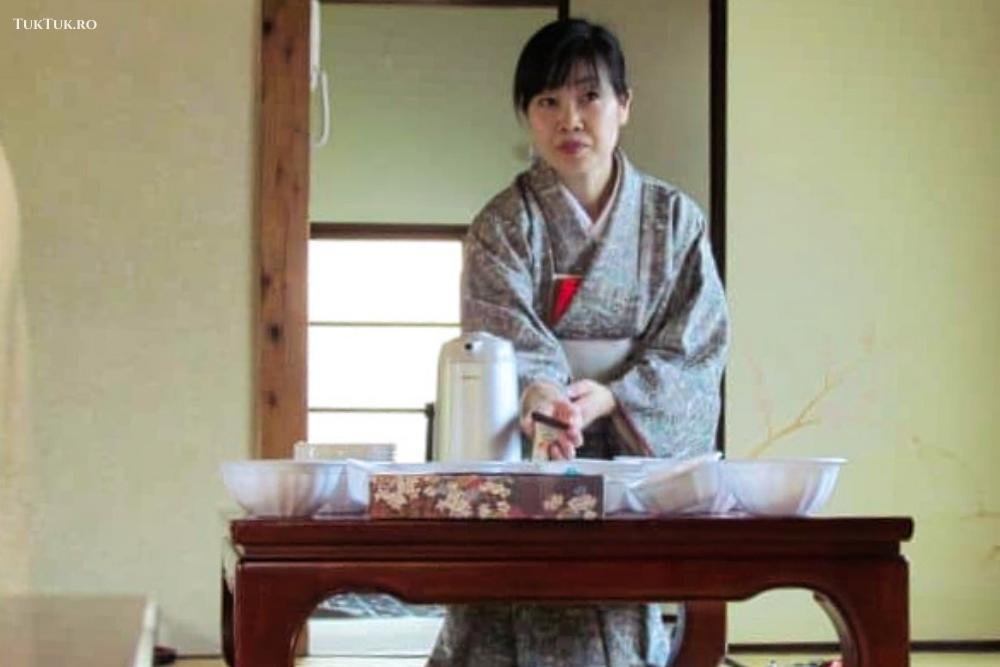

The host enters, bringing the tea bowl (chawan), along with the tea beater (chasen), tea napkin (chakin), and teaspoon (chashaku). The tea bowl represents the moon (yin) and is placed next to the jar of water, which means the sun (yang). The host then enters the room where she will brew the tea, where she performs the entire brewing ritual, a complicated one sprinkled with many elements.
On returning to the room, the hostess will pour tea into the first bowl and serve it to the main guest, who bows in acceptance. The guest admires the bowl and its designs, slowly lifting and turning it. He then drinks the green tea, wipes the bowl’s rim, and passes it to the person next to him, who will perform the same ritual.
The bowl in which the tea is served should be admired
When all the guests have served the tea, the bowl is returned to the hostess, who rinses it and spoons out the containers, then shows them to the guests. Then everybody engaged in conversation about the objects used in the ceremony and the act itself.
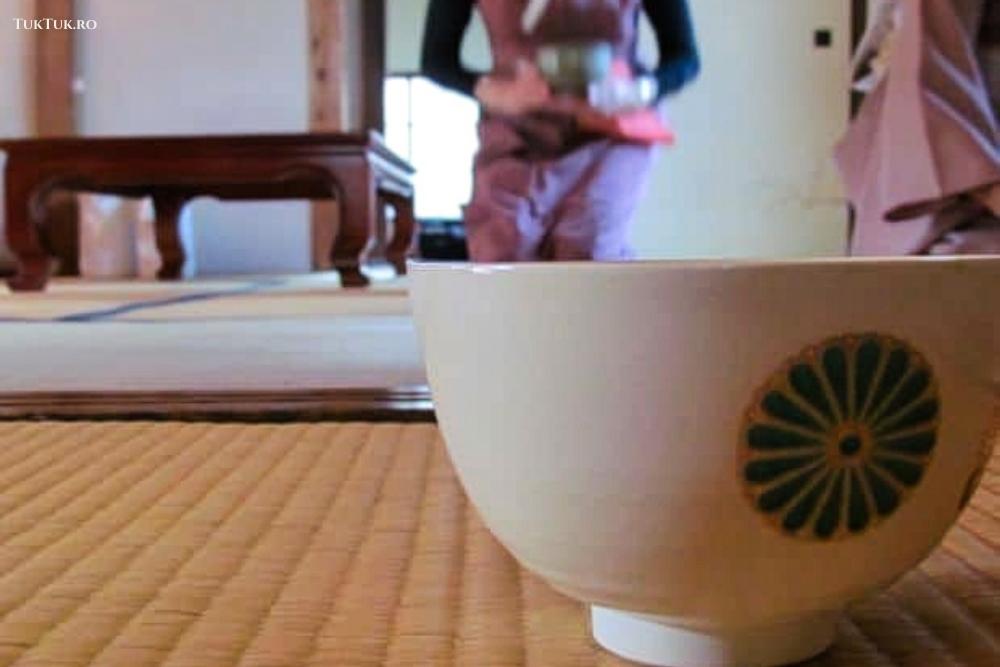
Finally, the hostess removes the utensils from the room, marking the end of the ritual.
In the ceremony I took part in at the tea house in the Hama Rikyu garden (which is run by the garden administration and is rented for such occasions to a maximum of 20 people), Mrs Kazuko Diaconu did her best to introduce everyone to the idea of spirit’s harmony, presenting us with authentic elements of this spectacular cultural act.
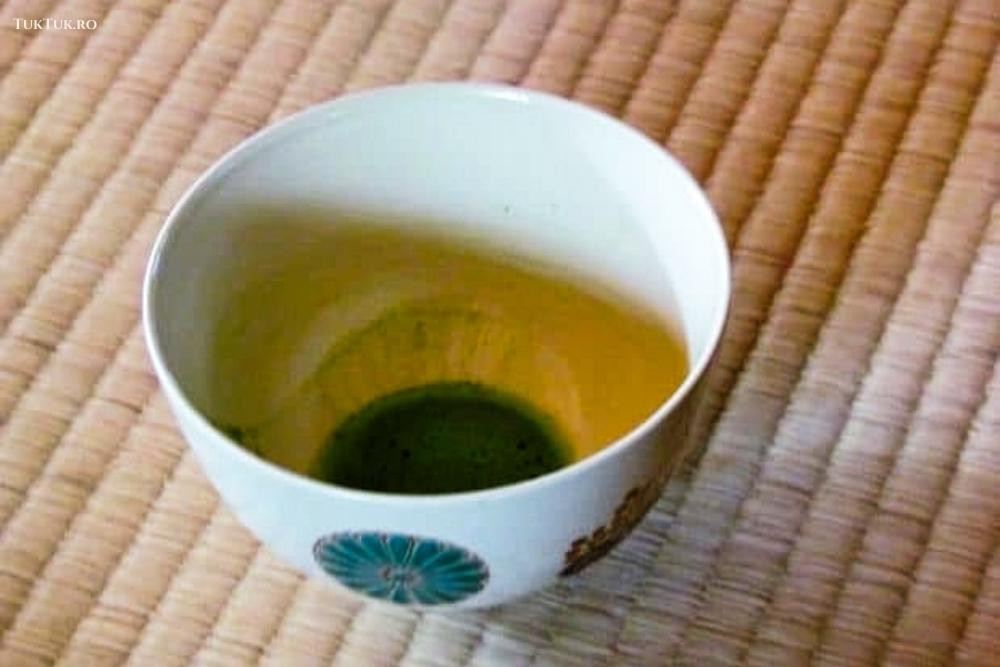
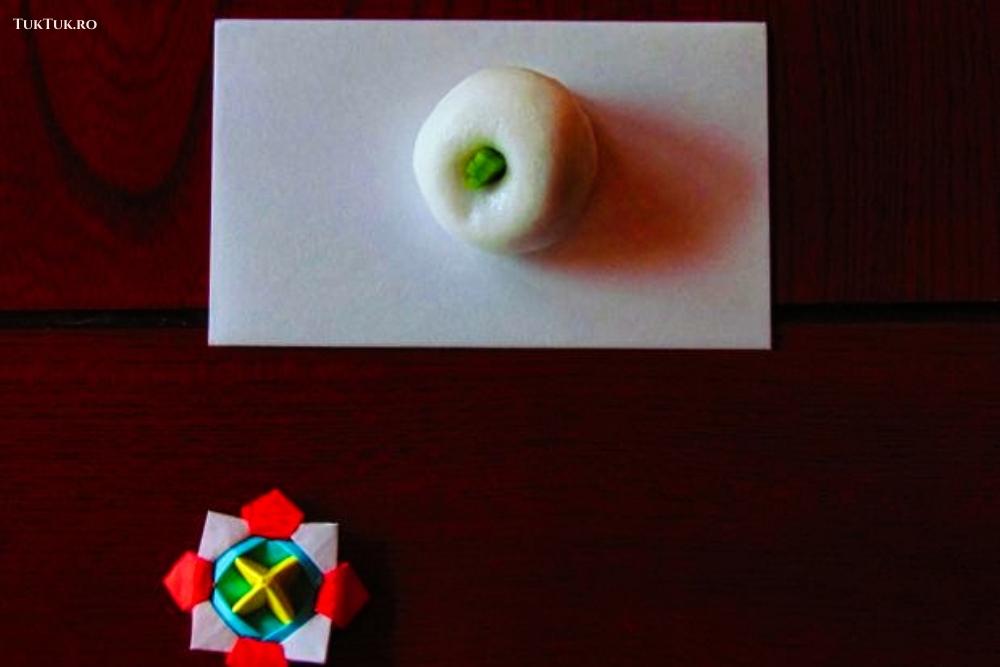
I noticed the instruments, the tea itself (matcha is actually a fine green tea powder), the way the hosts moved, careful not to step on the tatami lines, the care to put the tea in bowls and serve them. Needless to say, before entering the tea house, you have to take your shoes off. The tea itself tastes impossible, dominated by amino acids (sorry, I know I’m a layman!). Still, it takes exercise and a habit of drinking it, which probably aren’t hard to learn.
There are several types of matcha which, in principle, is a much more expensive tea than the usual ones (in tea shops in Japan you can find it – especially in the traditional Kyoto area – for around 10 euros for 20 grams). Matcha is sold in metal tins that must be kept in the fridge (even the freezer) to avoid oxidation once opened.
You may also like: Japanese food. Culinary habits in Japan

